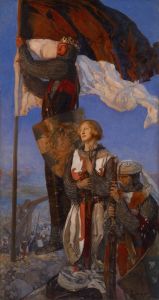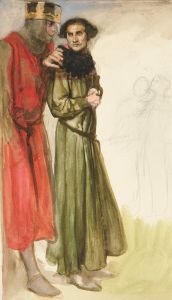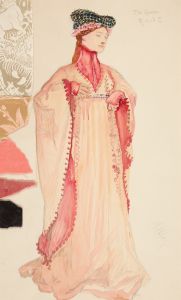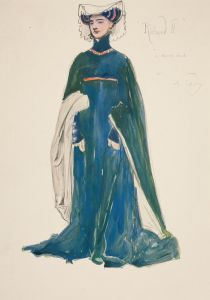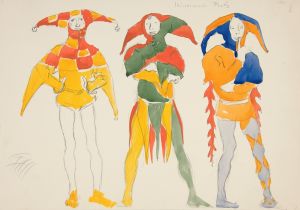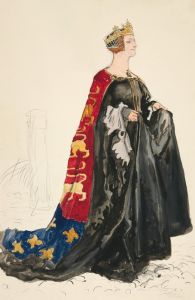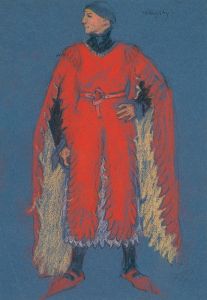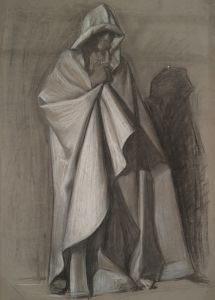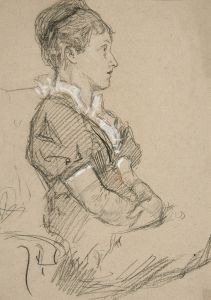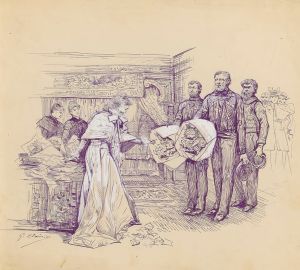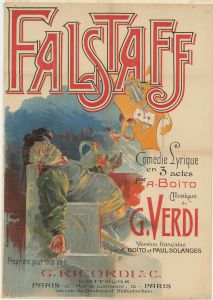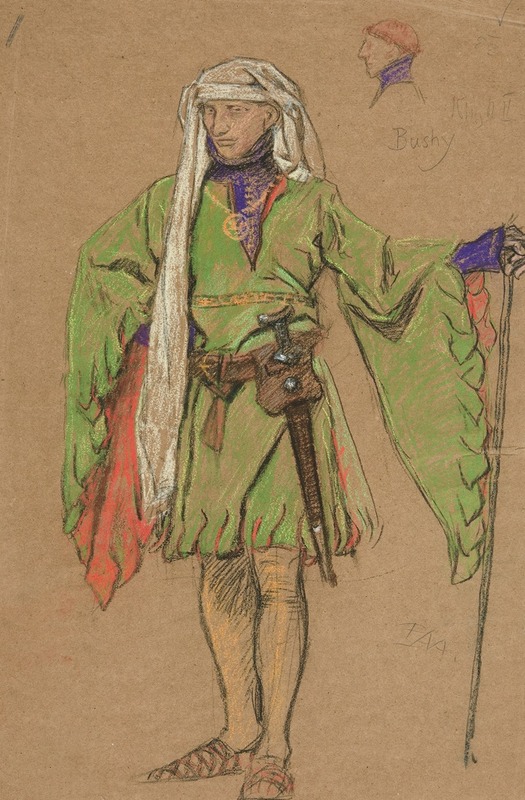
Bushy, costume sketch for King Richard II
A hand-painted replica of Edwin Austin Abbey’s masterpiece Bushy, costume sketch for King Richard II, meticulously crafted by professional artists to capture the true essence of the original. Each piece is created with museum-quality canvas and rare mineral pigments, carefully painted by experienced artists with delicate brushstrokes and rich, layered colors to perfectly recreate the texture of the original artwork. Unlike machine-printed reproductions, this hand-painted version brings the painting to life, infused with the artist’s emotions and skill in every stroke. Whether for personal collection or home decoration, it instantly elevates the artistic atmosphere of any space.
Edwin Austin Abbey was an American artist known for his illustrations and paintings, particularly those depicting scenes from Shakespearean plays. One of his notable works is the costume sketch for the character Bushy in the play "King Richard II" by William Shakespeare. Abbey's work in this area is part of his broader contribution to the visual interpretation of literary classics, which was highly regarded during his time.
Abbey was born in Philadelphia in 1852 and began his artistic career as an illustrator for magazines such as Harper's Weekly. His talent for capturing the essence of literary characters and scenes quickly gained him recognition. In the late 19th and early 20th centuries, Abbey moved to England, where he immersed himself in the study of historical costumes and settings, which greatly influenced his work.
The costume sketch for Bushy is part of Abbey's extensive series of illustrations for Shakespeare's plays. "King Richard II" is a historical play by Shakespeare that explores themes of kingship, power, and the divine right of kings. Bushy is a minor character in the play, one of King Richard II's favorites, who ultimately meets a tragic end. Abbey's depiction of Bushy would have been informed by his meticulous research into the historical period of Richard II's reign, which spanned from 1377 to 1399.
Abbey's sketches are characterized by their attention to detail and historical accuracy. He was known for his ability to bring characters to life through his understanding of the period's clothing, textures, and colors. His work often involved extensive research into historical documents, paintings, and artifacts to ensure authenticity. This dedication to historical detail is evident in the costume sketch for Bushy, where Abbey would have aimed to accurately represent the attire of a courtier from the late 14th century.
The sketch itself would likely feature elements typical of the period's fashion, such as long robes, intricate embroidery, and possibly a hat or headpiece that was fashionable among the nobility of the time. Abbey's use of line and shading would have added depth and realism to the sketch, making it a valuable resource for understanding both the character and the historical context of the play.
Abbey's contributions to the visual arts, particularly his Shakespearean illustrations, have left a lasting impact on how these classic works are perceived and understood. His ability to blend artistic skill with historical research has made his illustrations an important part of the study of Shakespeare's plays. The costume sketch for Bushy, while just one piece of his extensive body of work, exemplifies Abbey's dedication to bringing the past to life through art.
In summary, Edwin Austin Abbey's costume sketch for Bushy in "King Richard II" reflects his commitment to historical accuracy and artistic excellence. Through his detailed and researched illustrations, Abbey has provided a visual companion to Shakespeare's text, enriching the experience of the play for audiences and scholars alike.





